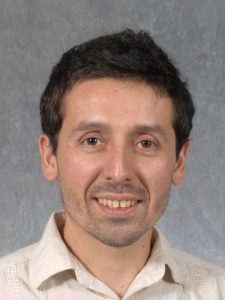Background
Several regions around the nation and the world suffer from chronic nutrient loss leading towards deleterious effects on in a variety of environmental sinks. The sources of the pollution are often numerous and diverse, including both point and nonpoint sources, resulting in disputes regarding who the source may be, the number of nutrients lost, and relative amount culpability for impacts on the environment.
Many of these sources can be tied back to food production systems of various types and in many instances often the terminal sink is a water body. This makes a clear food-water nexus challenge, but our challenge is not limited to this. The nutrients themselves are often quite costly to acquire or limited in availability at the production phase, where much of the cost is tied up in the supply of energy for conversion or transport, representing a high net energy cost. Further, high costs and limited availability should make the lost nutrients attractive for recovery and reuse, rather than residual loss, but such practices are rarely practiced for a variety of reasons. Should nutrients be recovered, not only are they useful for primary production, but they are also useful for other processes including renewable energy production. Resolving this sort of food-energy-water nexus challenge, particularly with the assistance of regulations plagues societies again and again, but remains unsolved in many instances.
Your challenge is to select one of following regional nutrient loss, recovery, and reuse challenges and propose a regulatory remedy for a local governing body (e.g. the Illinois Environmental Protection Agency) or propose an analogous challenge of your own design.
- The Illinois River Basin is one the largest tributaries of Upper Mississippi River Basin, with a drainage basin area of 28,906 square miles. This large watershed covers 44 percent of the state of Illinois and almost 90 percent of Illinois’ population. Agriculture accounts for 88% of the basin area with corn-soybean rotation as the major cropping practice. Most of the basin is artificially drained with subsurface drainage, which provides a rapid pathway for excess water to leave the soil profile, making these lands productive, but also facilitating a quick transit allowing nutrients to move into surface waters. Illinois has been recognized as the state with one of the highest contributions of both nitrogen and phosphorus load to the Mississippi River. The basin also has lost ecological integrity due to sedimentation, water level fluctuation, degradation of tributary streams, and loss of floodplains due to human activities. As a result of this basin, as well as other tributaries of the Mississippi River, have become the focus of the Environmental Protection Agency and the Hypoxia Task Force (US EPA 2014).
- The Cape Fear River Basin in North Carolina is home to 8.4 million pigs including large concentrations in Sampson and Duplin counties. Some of these operations are owned by pork production companies, but most are contract growers working for large corporations seeking the efficiency of vertical integration. While many contract producers are not required to use the typical systems that other growers use, it is preferred because operations are simplified and acceptable to the corporations. Lagoon-sprayfield systems are most common in this region. These systems allow improved air quality in the swine houses during the hot, humid summer, but allow large amounts of ammonia to volatilize to the atmosphere. Despite this loss, many farms are still land-limited relative to nitrogen uptake by feed crops due to small land parcels and limited yield potential. Therefore, hay is preferred on lands where manures are applied. With so much hay in this region, prices are depressed and a significant portion is under-utilized. Thus, the land application focuses on nitrogen and lagoon liquid disposal rather than nutrient recovery and utilization.
- The Lajas Agricultural Reserve contains the Lajas Valley and the Río Loco Watershed, which supports extensive fodder production and livestock grazing operations, primarily for dairy systems. Farmers are quite interested in sustainable farming practices, which is especially relevant considering sensitive environments downstream in the Guánica Bay. These ecosystems contain habitat for the endangered manatee, bioluminescent bays, and tropical reefs, all of which support extensive tourism and fishing industries. There exist several potential contributors to the nutrient loss in the Lajas Valley: this region sits atop an unconfined aquifer with a semi-arid climate that favors a mixture of irrigated and rainfed agriculture. The lower valley floor has an upward hydraulic gradient that needs innovative drainage systems to alleviate artesian pressure from salt-free water but is at risk of salinization in the upper soil profile (Vázquez & Ortíz, 1967). Forages are harvested and exported, primarily to dairies. Nutrients imported as manures are applied wet during irrigation or via direct grazing. Geospatial and temporal application of these practices is critical given weather patterns that favor infrequent, but heavy, rains associated with large runoff and sedimentation events. Quantifying and managing the magnitude of sediment and nutrient outputs from sub-watersheds within the valley, and the relative magnitude of each source, are great concerns to regional stakeholders.
- The Shenandoah Valley region of Virginia has been identified as a critical hot spot of nitrogen and phosphorus delivery to the Chesapeake Bay (Brakebill & Preston, 2004) and is currently subject to the largest and most expensive total maximum daily load (TMDL) regulation ever developed. Intensive livestock and poultry production coupled with land application of the produced manures has resulted in significant quantities of nutrient stored in the soils, subject to transport in both surface runoff and groundwater. In the South Fork of the Shenandoah River (HUC 02070005) previous efforts have shown that critical source areas are a large source of water quality degradation (Sommerlot, Berbero, Fuka, & Easton, unpublished manuscript). Land cover in the Shenandoah watershed is 50% forest, agriculture is 40% and mixed urban residential 10%. Saturation induced runoff generation from soils with shallow restrictive layers at lower landscape positions, where most of the agricultural activity occurs, accounts for the majority of surface runoff and, as a result, nutrient loss.
Expectations
- Set ground rules for teamwork including measures of effectiveness and productivity
- Collaborate to identify the problem or problems while assessing gaps in information (You may not have all the information you need yet!)
- Evaluate stakeholders’ goals and interests with respect to the needed water standards and their influence on the FEW Nexus
- Collect relevant data and collaborate on data analysis and synthesis for the preparation of a recommendation for your key stakeholders
- Develop your skills as a cohort by identifying and engaging in the appropriate INFEWS-ER Toolbox Learning Modules, and other training, to support your efforts here
- Produce a final report and an oral presentation for your key stakeholders
Objectives
- Your challenge is to make a recommendation to an appropriate regulatory body for your selected region regarding river and stream water quality standards. These standards should consider phosphorus, nitrogen, and biological response variables.
- Determine whether your recommendation should vary spatially (e.g. statewide, ecoregion, watershed, rive, specific site), based on land use, water body type, or other classification factors?
- Identify and explicate the major obstacles in the adoption of new or revised standards.
Learning Outcomes
Technical Outcomes
- Students will develop a working knowledge of the complex interactions leading towards nutrient loss, particularly in food and agricultural systems
- Students will identify strategies for reuse and recovery of nutrients
- Students will consider the pitfalls and opportunities for the use of regulation to mitigate losses
Interdisciplinary or “Team Science” Outcomes
- Students will develop their skills in Systems Thinking and Visual Mapping of complex problems
- Students will develop their skills in effective Communication across disciplines
- Students will apply the principles of “High Performing Teams” in establishing their own transdisciplinary teams
- Students will recognize the importance of stakeholder engagement and consider their perspectives when solving problems
Approach
- Select a region and make recommendations to local regulating bodies regarding river and stream eutrophication water quality standards that are appropriate for protecting aquatic life uses in the affected water bodies, which may include numeric water quality criteria for phosphorus, nitrogen, and biological response variables as components of eutrophication water quality standards, and may include narrative eutrophication water quality standards to supplement numeric criteria.
- Identify existing water quality standards and management goals relevant to the development of eutrophication standards for water bodies affected by activities in your region.
- Develop one or more conceptual models, as needed, demonstrating the effect of increased nutrients on aquatic life (including algal, plant, benthic macroinvertebrate, and fish communities) in water bodies affected by activities in your region.
- Evaluate the relationships between nutrients, habitat, and other environmental factors to ecological response variables, such as algal abundance, dissolved oxygen, and various indicators of stream health based on fish and invertebrate communities.
- Develop an analysis plan for identifying key stakeholder constraints for the adoption of the standard recommended above.
- Prepare a Science Summary to lay audience of Regulators or Stakeholders
How Much Time Will I Commit?
We are designing this to be roughly equivalent to a 3 credit hour course for those on a semester system (4.5 credit hours for those on a trimester system). We encourage students to work with their advisor to build this into the student’s academic plans as a 3-credit hour special problems course. A full course syllabus and description are available for documentation requirements. Our tentative schedule will initiate from early October through March 2019.
Final Report (Policy Brief)
The Summary for Policymaker Report integrates the findings of a volunteer effort by a team of graduate students working to develop a tool to understand and predict the effect of interventions in the agricultural sector in Illinois State. Results of this effort indicate that N- losses in the State can be reduced using mix of social and financial incentive within existing programing. Read the 2019 NLRRR_FinalReport…
References
Brakebill, J. W., & Preston, S. D. (2004). Digital data used to relate nutrient inputs to water quality in the Chesapeake Bay watershed, Version 1.0 (No. Open-File Report 2004-1433) (p. 15). USGS. Retrieved from http://md.water.usgs.gov/publications/ofr-2004-1433/
Sommerlot, A. R., Berbero, M., Fuka, D. R., & Easton, Z. M. (unpublished manuscript). Coupling the Short-Term Global Forecast System Weather Data with a Variable Source Area Hydrologic Model.
USEPA. (2014, October 1). Mississippi River/Gulf of Mexico Hypoxia Task Force [Collections and Lists]. Retrieved July 27, 2018, from https://www.epa.gov/ms-htf
Vázquez, R., & Ortíz, J. (1967). Drainage and groundwater research in Lajas Valley, Puerto Rico (No. Bulletin 206). Agricultural Experiment Station, University of Puerto Rico-Mayagüez.
| Fidel Maureira Sotomayor, Washington State University
I am a Ph.D. candidate in Biological Systems Engineering and am working on the development of the CropSyst Microbasin model which is crop model that solves numerically for a three-dimensional grid for fluxes of water and nutrients transport on the soil. |
 |
| Mara Zelt, University of Nebraska
I am currently working toward an MS in Bio-systems Engineering. My research is focused on reducing manure-borne antimicrobial resistance from beef production systems. I have also had coursework and undergraduate research experience in nonpoint source pollution reduction, manure management, and siting and bio-security for animal housing. |
 |
| Marcelo Chan Fu Wei, Sao Paulo University (Brazil)
My focus is on precision agriculture. My undergraduate educational background is in agronomic engineering/agronomy. |
 |
| Sarah Acquah, University of Illinois
I received a bachelor’s degree in Mathematics in Ghana, an M.S. in Agricultural Economics from Mississippi State University and a Ph.D. in Water-Resource Economics from New Mexico State University. Now, a post-doc at the University of Illinois, my projects focus on using the Biofuel and Environmental Policy Model (BEPAM) to analyze land-use change impacts of biofuel production, nitrogen applications, and environmental co-benefits of the Renewable Fuel Standard (RFS). |
 |
| Mengqi Zhao, Washington State University
My Master’s Degree is from Hohai University in hydrology and water resources and I am a Ph.D. candidate in hydrology and water resource science. |
 |

